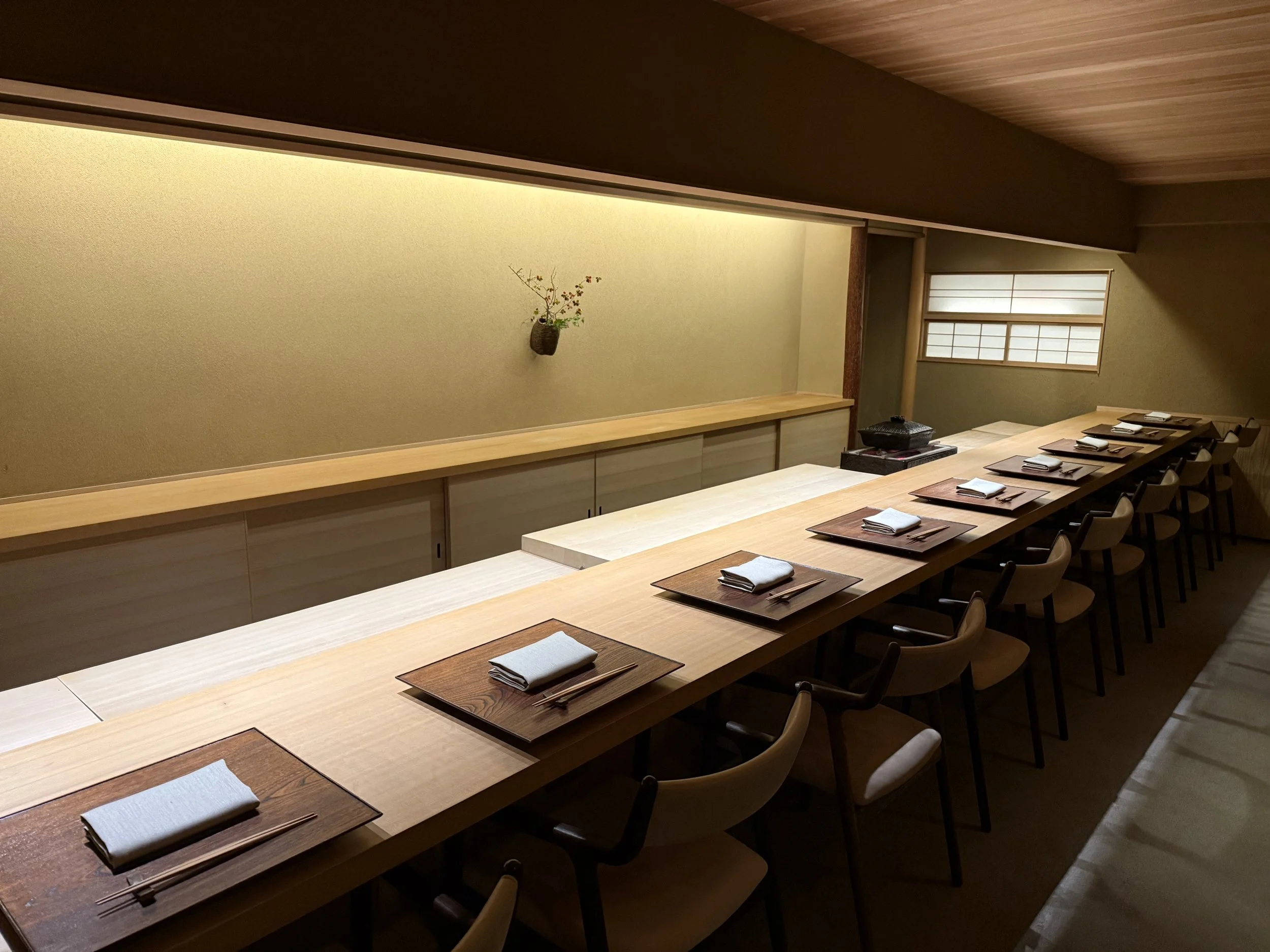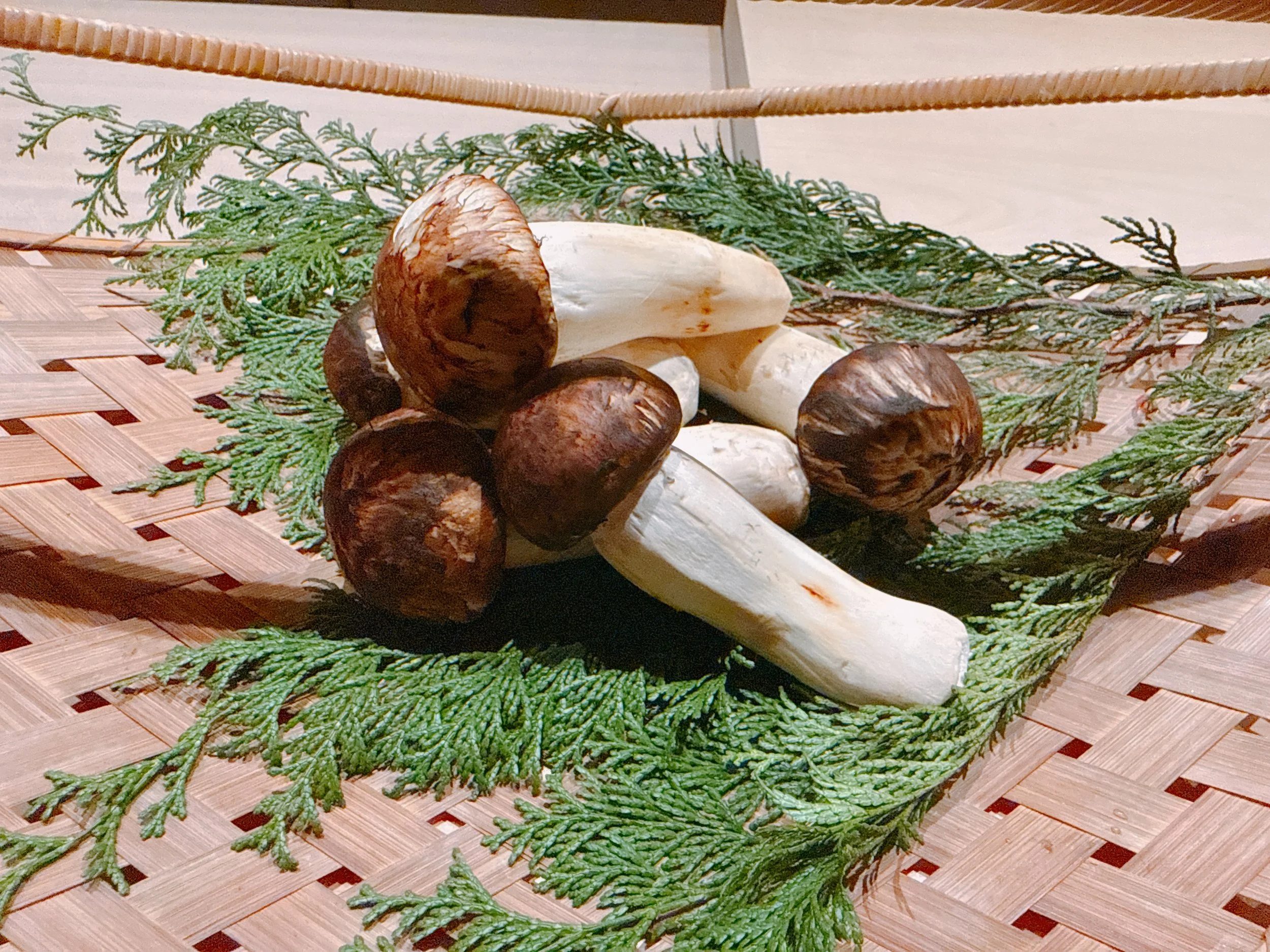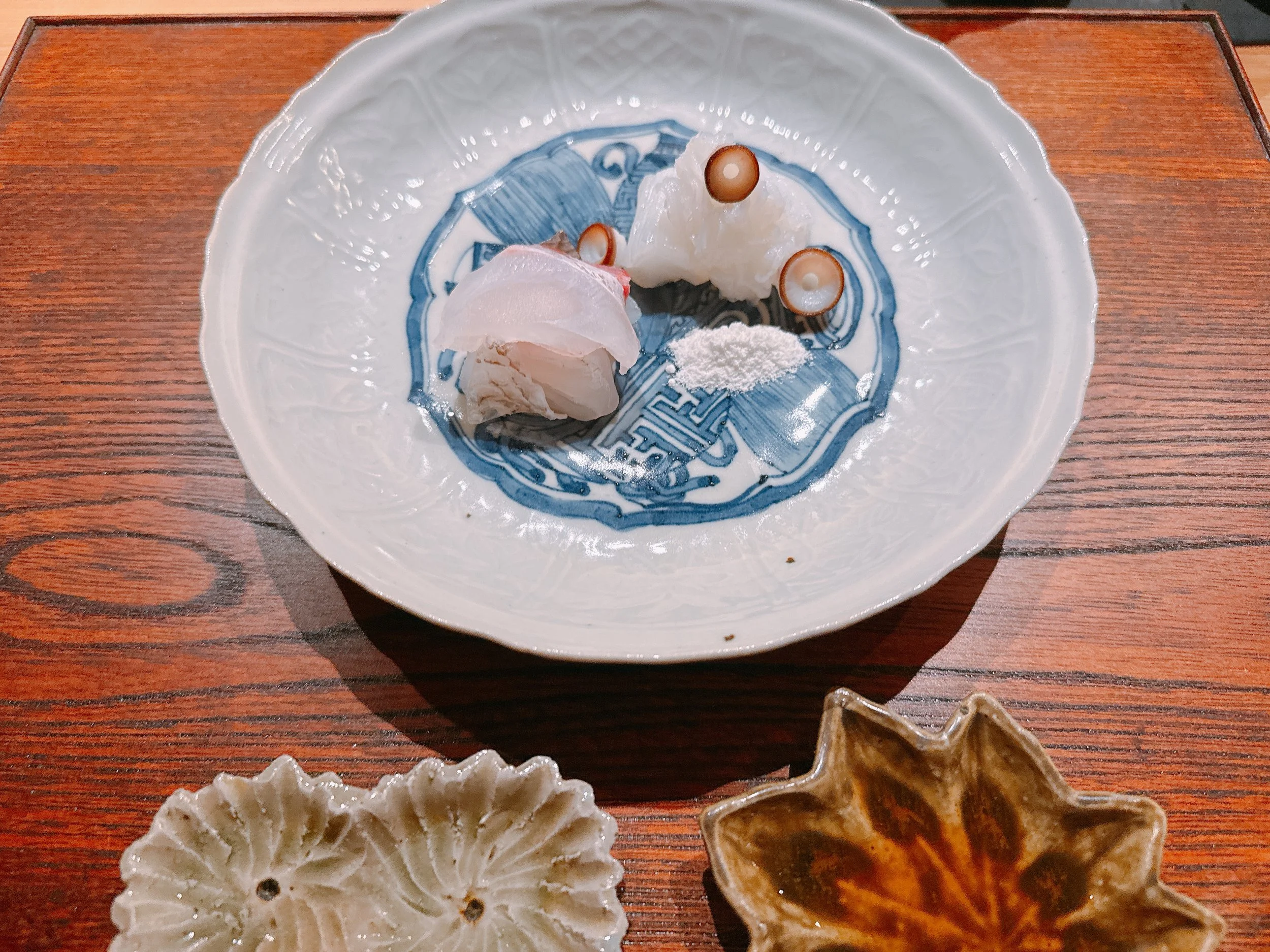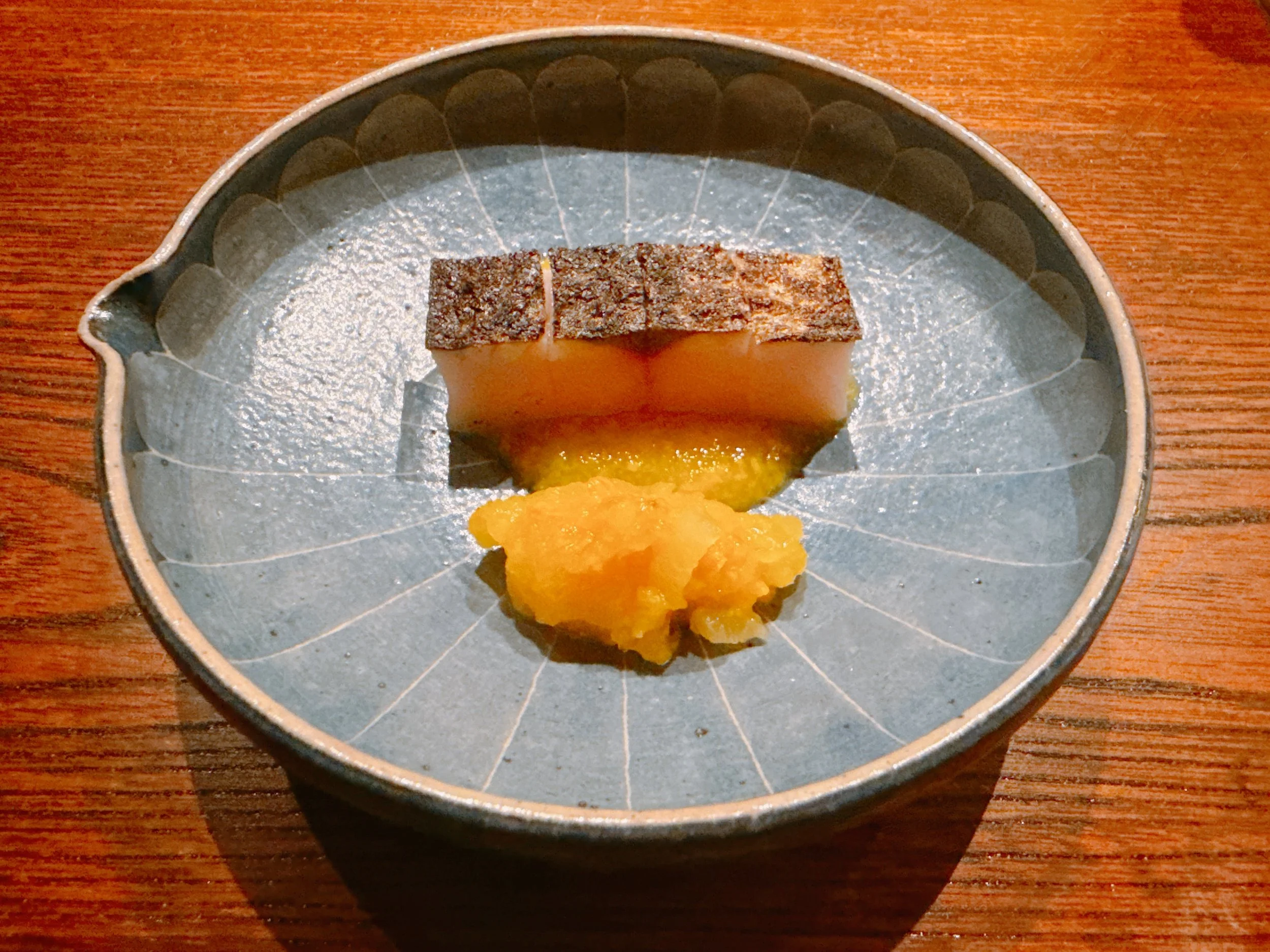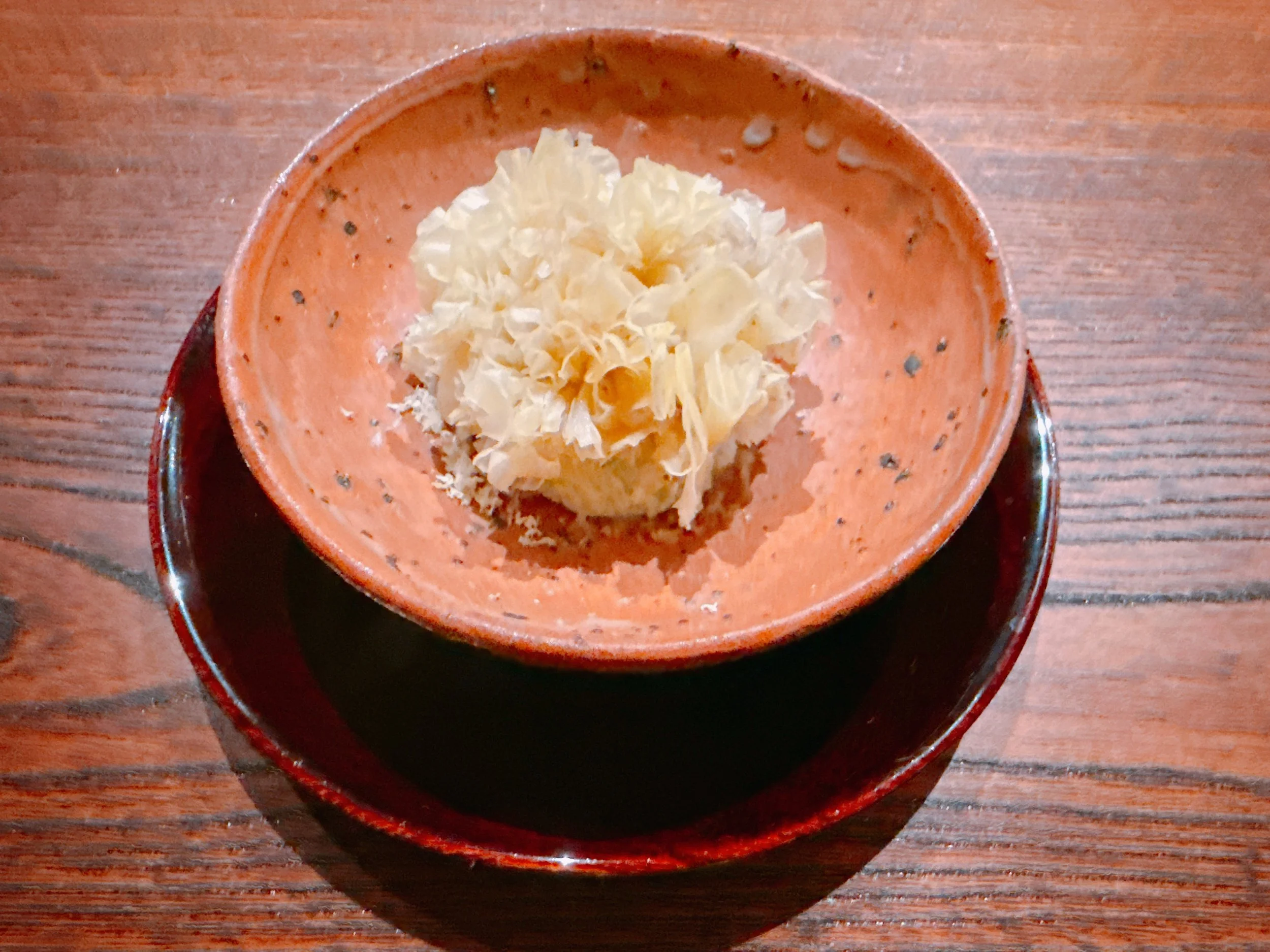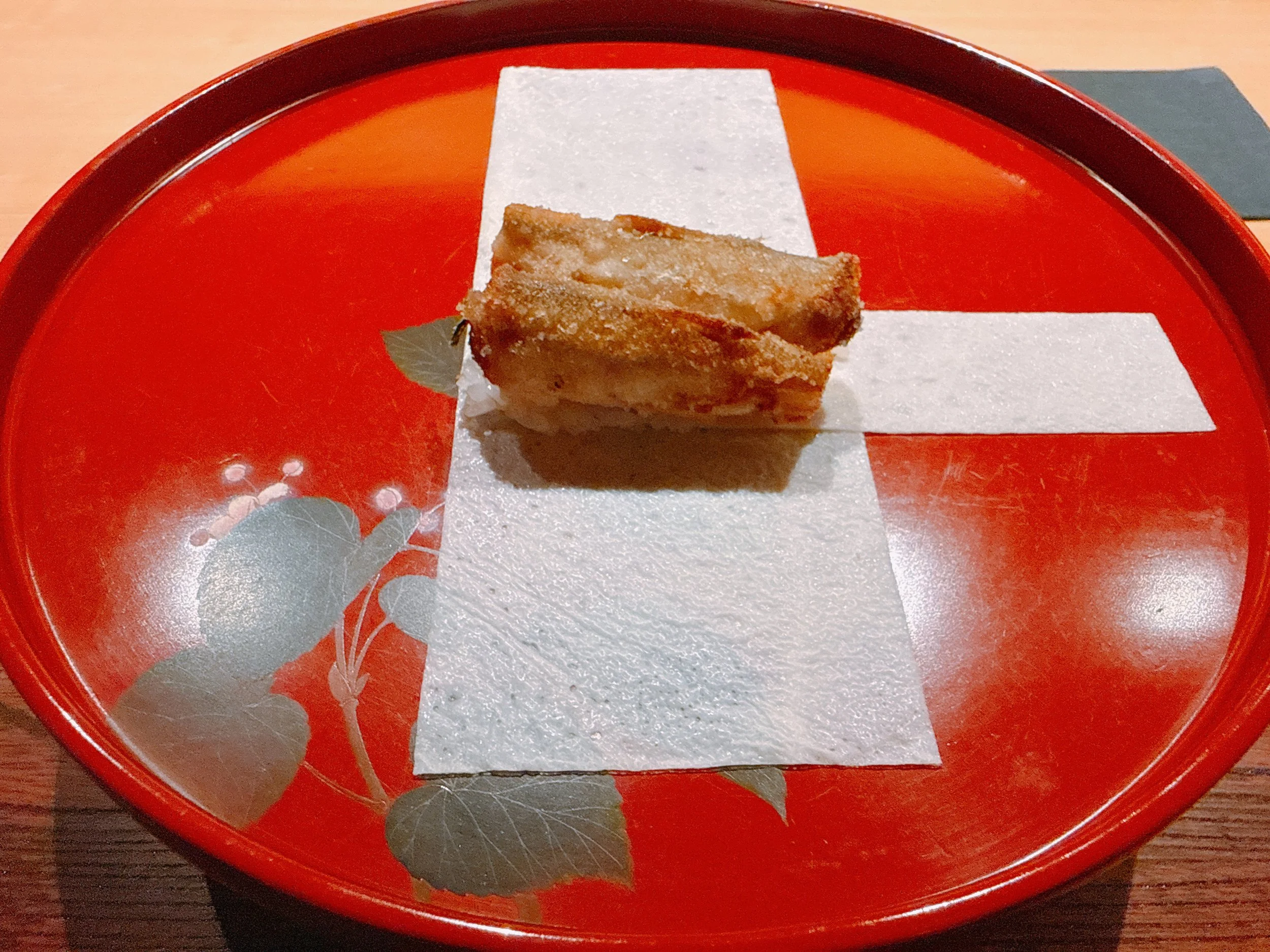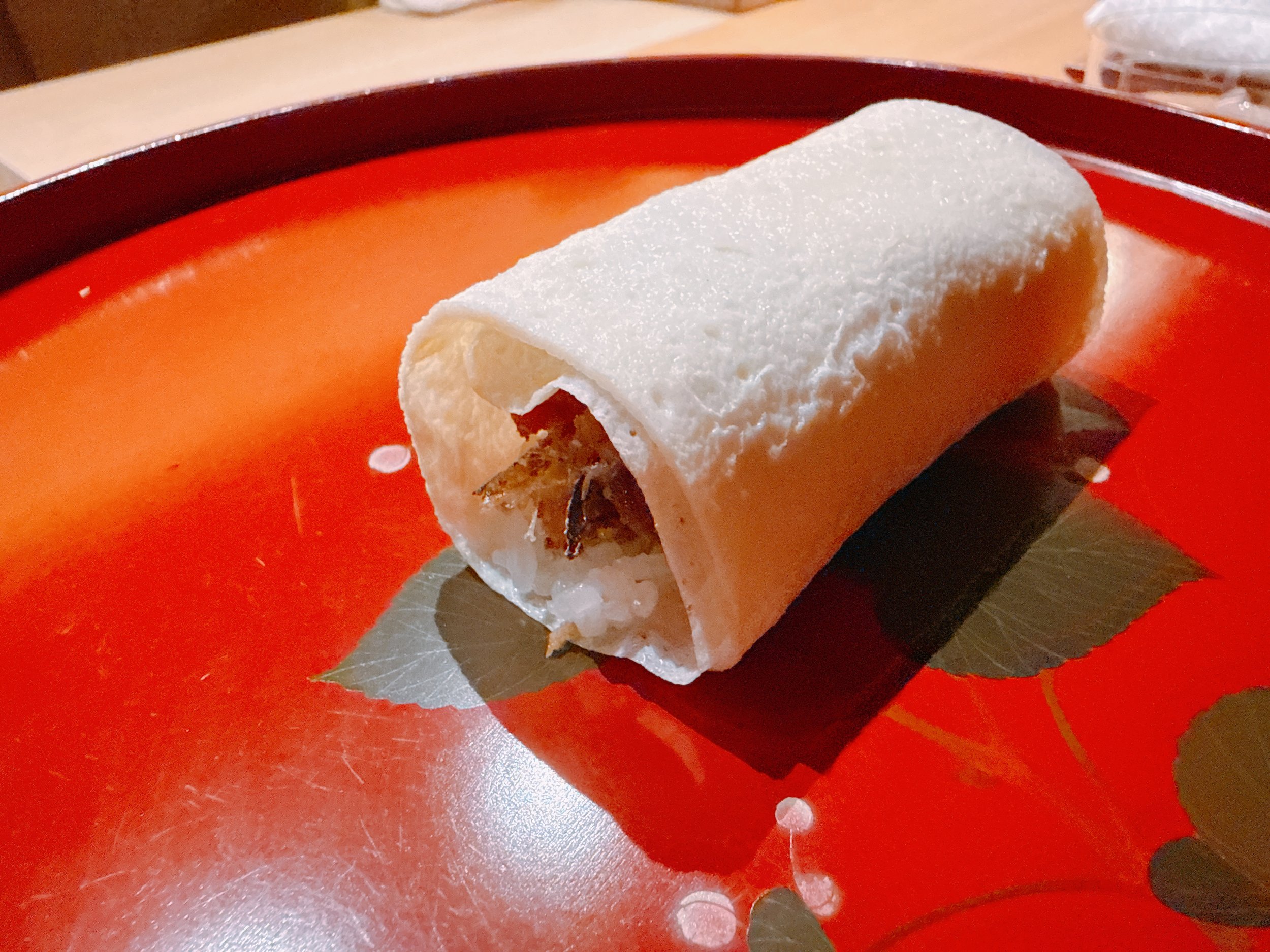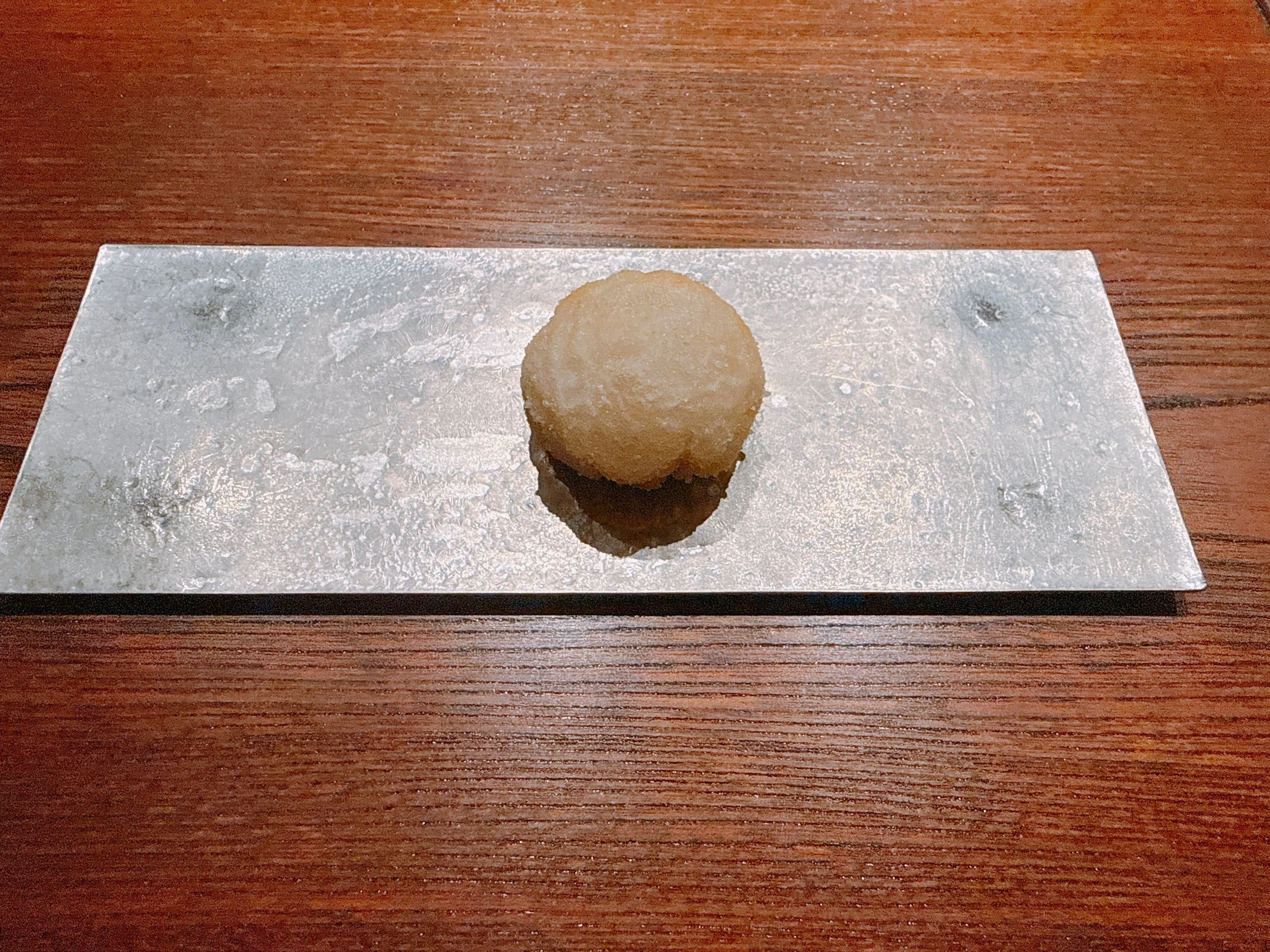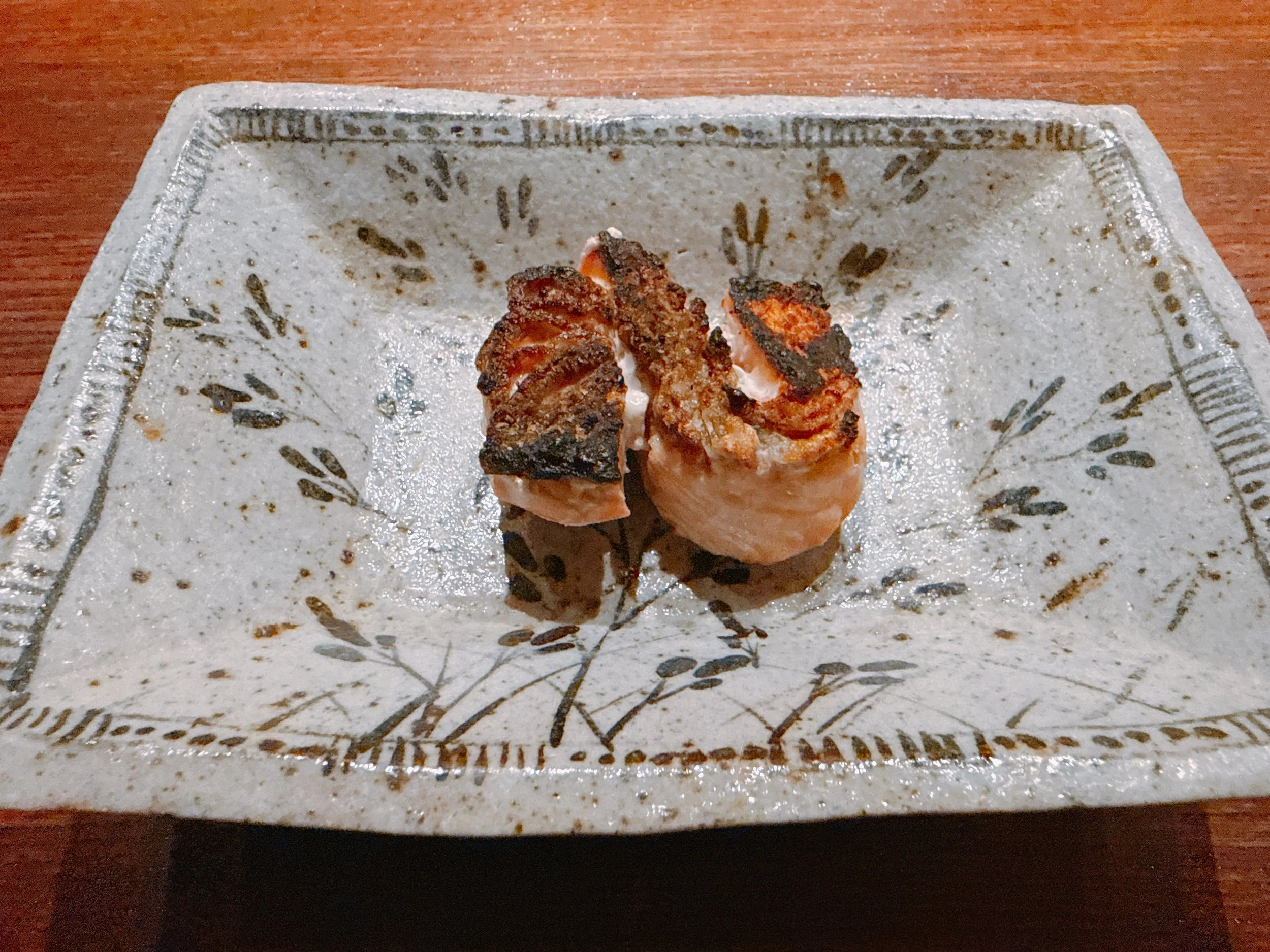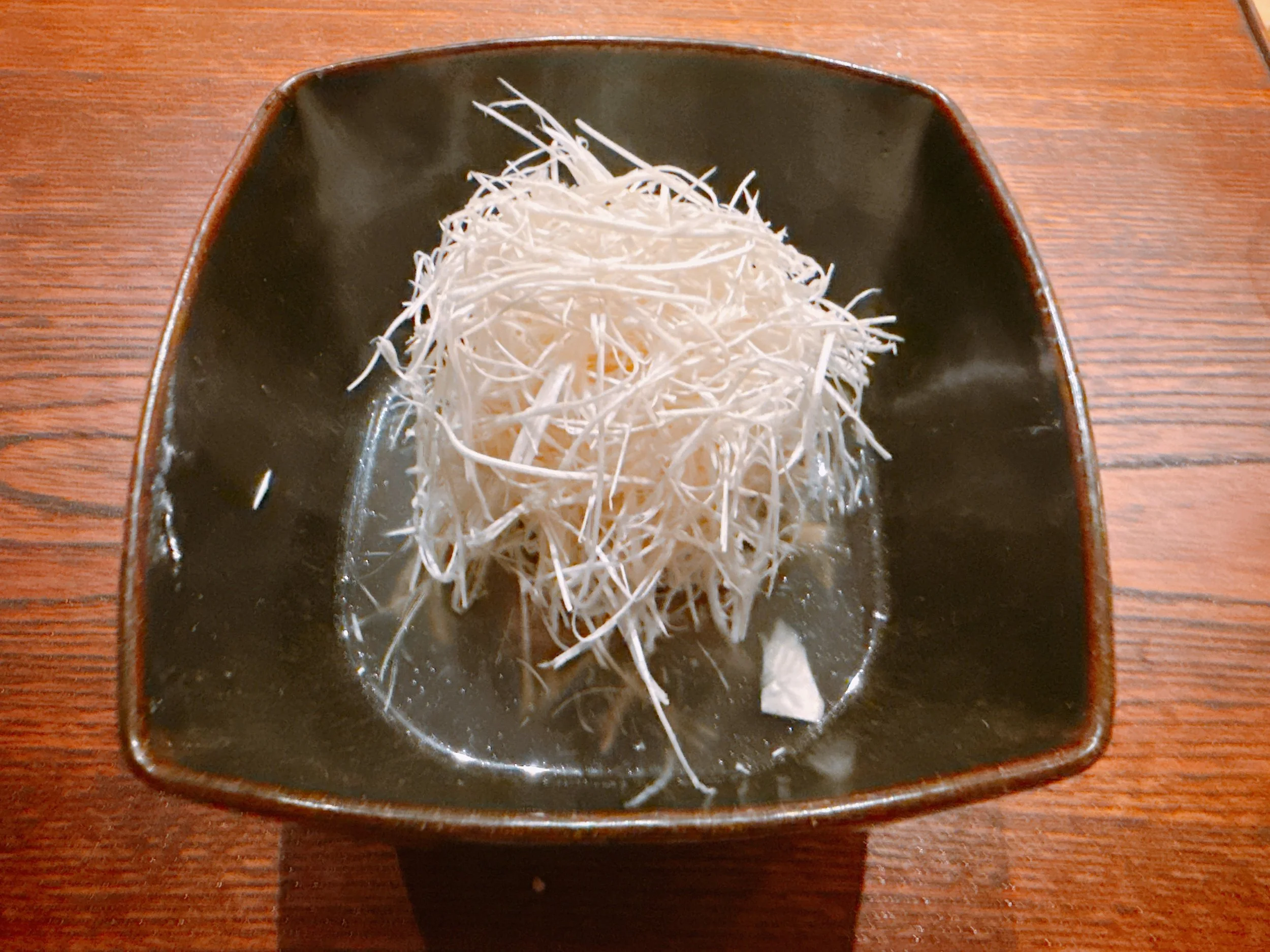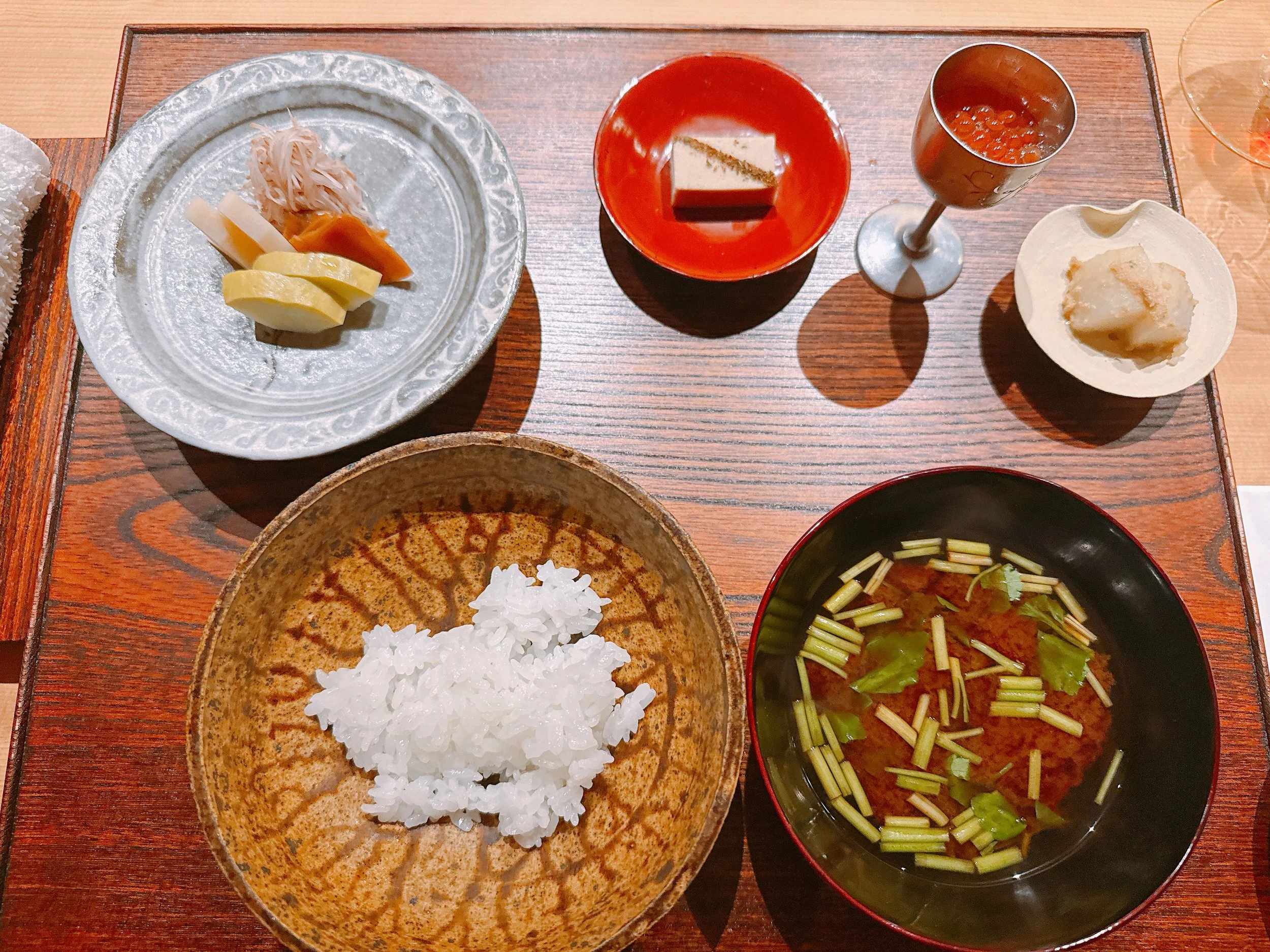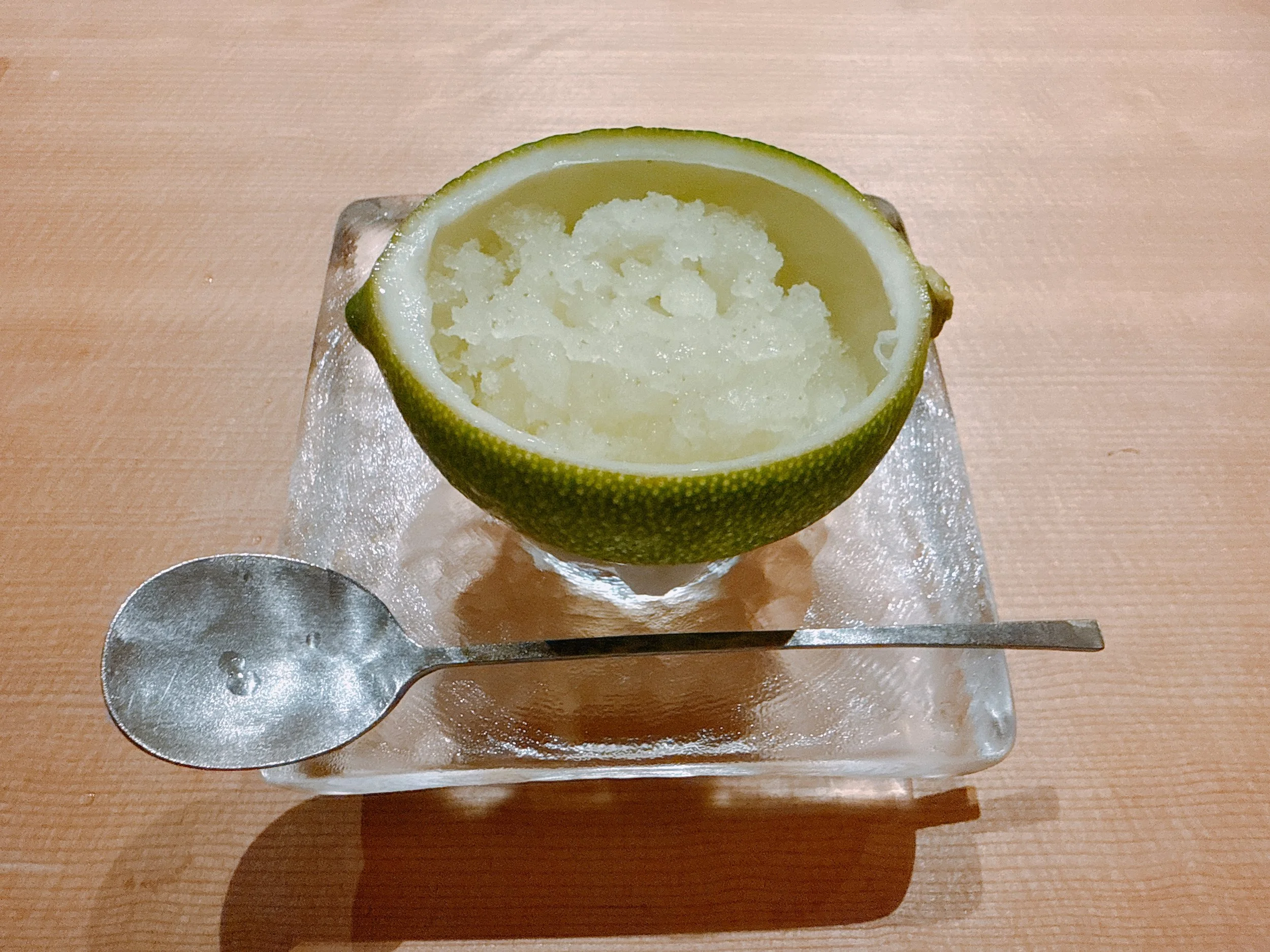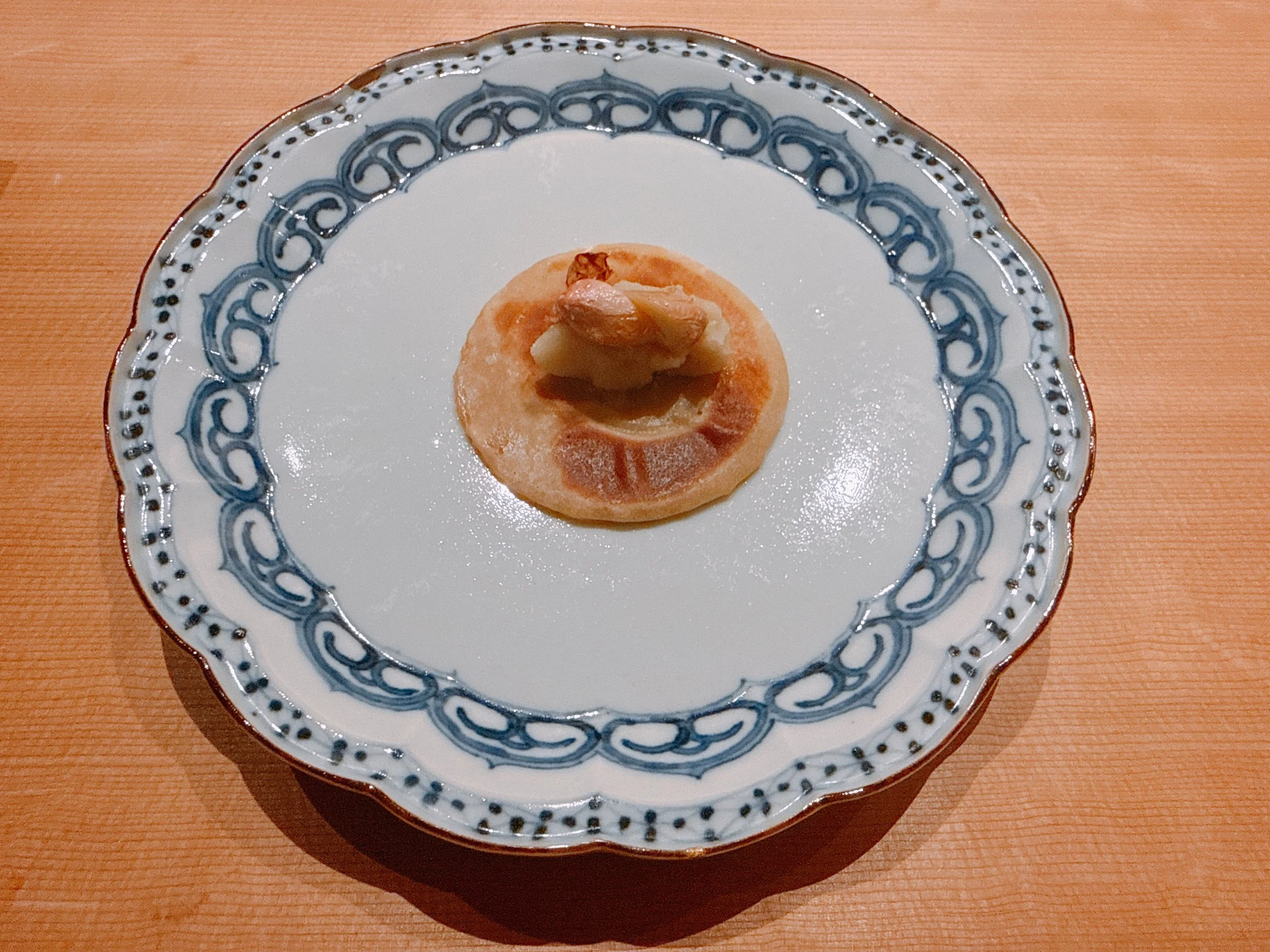Myoujyaku - Tokyo
Rating: 17/20
Where: Tokyo, Japan
When: Dinner for 1 on 31 October 2025
Cost per Person: Tasting menu 50000 JPY ($325), Beverage pairing 22000-40000 JPY ($145-$260)
Accolades: 3 Michelin Stars, Tabelog Silver Award (2025)
Why: A minimalist, technically impressive approach to kaiseki; several delicious dishes
It was a rainy Halloween night in Tokyo, and I was walking down a quiet side street near the city’s Roppongi Hills neighborhood. I was looking for the city’s newest three-Michelin-starred restaurant, called “Myoujyaku” (or Myojaku, if you prefer Michelin’s transliteration). Unfortunately for me, lacking an umbrella, the restaurant was not the easiest one to find. It turned out that its entrance was down a flight of stairs, and only there, next to a sliding door, was a small lantern with the restaurant's name written in Kanji. No wonder that the first Michelin Guide for Tokyo included helpful pictures of each restaurant’s entrance.
Myoujyaku served Japanese kaiseki. However, while the meal followed the overall structure of this traditional cuisine, the actual dishes turned out to be very minimalist, giving them a distinctly modern flair.
The restaurant’s main dining room featured a long counter that was set for nine guests during my visit. Three foreigners (including myself) were seated at the left side of the counter, and six locals sat on the right, closer to the charcoal grill operated by the head chef himself. Besides grilling, he also sliced the sashimi and the seasonal matsutake mushrooms in front of us. Most of the rest of the cooking happened in an out-of-sight kitchen. The chef spoke mostly to the Japanese customers, but stopped by our side of the counter frequently to plate and finish various dishes. One of his apprentices introduced every course in English, and additionally, we were given a very detailed printed English menu (see below for a couple sample pages).
As is common for kaiseki restaurants, there was only a single fixed menu. Usually priced at 40000 JPY ($260), it cost 50000 JPY ($325) on my visit due to the inclusion of seasonal (and expensive) matsutake mushrooms. Two wine-and-sake pairings were offered for 22000 JPY ($145) and 40000 JPY ($260), respectively. These eight-glass pairings actually differed only in their first and the last wines - the six pours in the middle were the same. The first glass was either a 2014 Henriot or a Krug champagne, and the last either a 2010 Jacques-Frédéric Mugnier Nuits St. Georges 1er Cru “Clos de la Maréchale” or a 2008 Olivier Bernstein Bonnes-Mares Grand Cru. The latter choices were probably better, but it’s debatable whether they were worth doubling the cost of the pairing. Overall, the paired beverages were good, but not exceptionally so. Interestingly enough though, two of the sakes were served warm and hot, respectively - a first for me in a fine-dining setting.
But on to the food. Our first course was a clear broth that initially contained a single simmered small mushroom. In front of us, freshly sliced matsutake mushrooms were added to the bowl. The broth had a subtle, but quite enjoyable mushroom flavor, and the matsutakes added some texture and a light mushroom flavor. The ingredients here were literally just mushrooms, water and salt - no other seasonings whatsoever. It doesn't get much simpler than that, and it was nice to see that the mushrooms were really allowed to be the sole star of the show. But actually, there was more: the kitchen (technically) hadn't even added salt to this dish. Instead, the restaurant had sourced seabed-spring water, essentially seawater that originated from underwater fresh water springs. That water was salty, but not as salty or as mineral-heavy as “regular” seawater would have been. By blending this seabed water with mountain spring water, the kitchen was able to achieve the desired salt content for the broth.
What an unusual way to use natural resources to create a broth. In its simplicity, it tells a story of being more connected to nature than one would be with a “regular” cooking style. A cynic might ask whether a blind taste test would actually detect any material difference between a dish made using seabed-spring water and one employing tap water and a salt shaker. But that really misses the point here. The story behind the dish definitely affects how we perceive it and thereby our enjoyment of it. (It’s no coincidence that story telling has become a noticeable trend in fine-dining restaurants.)
Depending on how impressed one might be by how this mushroom broth came to be, one could rate it anywhere from a 16 to a 20. I'll put some more emphasis on the taste by itself, so let's call this a 17.
Our next course was equally minimalist in terms of ingredients: a “crab dumpling” that had been made solely by (re-)combining different parts of a crab (its roe, its meat, its innards). The dish was “salted” by boiling the crab in the aforementioned seawater. Next to the dumpling were some thinly sliced apples and young ginger seasoned with sudachi juice. We were instructed to try the crab by itself first and then to add the apples on subsequent bites. The dumpling was served cold, and with its creamy roe, fresh meat and very crabby taste really distilled down the essence of a crab dish. The apples lightened the whole up a bit, and managed to do so without losing any of the crab flavor - very nice 17.
Two kinds of sashimi - sea bream and octopus - were served with two sauces, both based on fish stock: one was simply salted, and the other one contained some soy sauce. For the octopus there was another condiment: an “octopus salt” made from pulverized dried octopus and salt. Two different sakes were paired with this course, one for each fish. The “sea bream sake” was warmed to 35 degrees Celsius - almost body temperature. (I preferred the other, chilled sake, but warming the sake was still an interesting choice.) The sea bream had been scored, but was still pretty chewy. In my opinion, it went best with the salt-based sauce 16. The fresh octopus was scored even more finely, making it feel slightly creamy. Curiously, the various octopus pieces on my plate had different textures - I’m not sure whether that was intentional. In any case, the octopus was lovely when paired with its namesake salt 17.
Next came an owan, the traditional clear soup that appears in every kaiseki meal. It's not hard to guess at this point: Myoujyaku's clear soup didn't have any seasoning, and was simply a mixture of seabed water and spring water. All the flavor came from the two other ingredients in the bowl: a maitake mushroom and hamo (pike conger eel). And it worked: the broth had a lovely (although light) flavor even with this minimalist approach. The mushroom tasted slightly earthy, but its main contribution to the dish was texture, not taste. The eel had a nice texture as well, and was suffused with the broth 17.
The following grilled fish course featured sawara (Spanish mackerel) that had been smoked and then grilled on its skin. The fish came with a vinegary sauce, as well as some daikon mixed with chrysanthemum. Compared to what came before, this dish had quite a long list of ingredients (sawara, daikon, green onions, sake, salt, lemon juice, white soy, etc), and it showed: the flavors were much, much stronger than in previous courses. The fish had a nice texture: fatty, rich, almost raw and sporting a crunchy skin. The flavors had an equally wide range, going from smoky to fruity to slightly acidic. A great combination of a lovely fish and an amazing sauce 18.
Next, we received a steamed dish: chestnuts on top of an edamame paste called zunda. The result was nutty, had a light chestnut flavor, and (as expected) a mealy consistency. To me, the flavors of this dish didn't quite gel and it felt a bit too dry overall. The paired sake from 1997 helped a bit in the latter regard, but not quite enough 13.
One of the restaurant's signature dishes was a hand roll. I should say “hand roll” in quotes, since it was quite different from what one might see in a sushi restaurant. First of all, instead using nori seaweed, this hand roll was wrapped inside a thin egg omelet. How one goes about making such a thin omelet that does not tear - even when being eaten -, is a mystery to me. But the omelet gave the dish a much softer texture than nori would have done. Equally unusually, the hand roll was given to us unrolled. Initially, the omelet was topped only with sushi rice and the fried bones of the fish: smelt (shishamo) from Hokkaido. To this, the grilled smelt meat was added by the chef directly from the grill. Minimalism struck again with essentially only three ingredients: smelt, eggs, and rice. The combination was simple, but very, very good. The bones gave the hand roll's filling a nice crunch, reminding me of a fried, battered fish filet - but without any use of batter. Very impressive. The fish had a slightly mealy consistency vaguely similar to eel. Just based on taste alone, one might rate this a 17, but the preparation was quite ingenuous 18.
A kind of palate cleanser followed, with eight kinds of autumn fruits (figs, muscat grapes, Asian pears, mandarins, ...) that were dressed with walnuts, yuzu, a walnut paste and an Asian pear sauce. This dish was sweet, but not dessert-level sweet. Two of the fruit had been seasoned with pepper, making for a couple spicy bites. Lovely 17.
The next course was made with suppon aka soft-shell turtle. However, had we not been told, I doubt that anybody would have guessed at the turtle's involvement, since there was no actual meat in the dish. Instead, we got a fried sesame tofu that was enclosed in a sweet mochi rice shell. Both tofu and mochi had been soaked in suppon broth, but I couldn't make out any turtle flavor. The tofu was very creamy, and the mochi fatty and oily. This dish seemed to be all about texture, with barely any flavor. The paired hot sake added to the impression that we were enjoying an elevated bar snack 14.
Thin noodles (somen) were served in a bonito broth and covered with a white eggplant sauce - another ostensibly simple, but very tasty dish. Served cold, its main flavor came from the eggplant sauce, which was both savory and creamy. Delicious, and I would never have guessed that this was eggplant - there was no smokiness here for sure 18.
A charcoal-grilled filet of salmon was seasoned simply with salt. The cooking technique here was impressive, resulting in a very crunchy top and an almost raw interior. Simple, but good 17.
Hotpot time. This one contained bite-size cuts of wagyu, finely cut fresh matsutake mushrooms, and a simmered matsutake mushroom cap. The raw mushrooms' texture was similar to noodles, and they went nicely with the rich beef. Again - ostensibly simple, but delicious 17.
Following tradition, our final savory course was a rice dish. But it started out with a surprise: we were served plain rice. The rice was cooked nicely no doubt, but was entirely devoid of any seasonings. Even given the restaurant's minimalist ethos, this seemed a bit extreme. Next to the rice were some pickles (cucumber, lotus root and bamboo shoots), and a red miso soup. But thankfully, after the initial surprise, more ingredients kept on coming: steamed taro root, a fish terrine, and last, but not least, salted salmon roe served in a silver cup. (The paired beverage was a hojicha tea - the alcoholic beverages had concluded with the previous course.) Now, there were lots of options, but one of the best ways to eat this dish was to add all of the salmon roe to the rice. The warmth of the rice enhanced the already amazing flavor of the salmon roe, and the resulting combination was spectacular (18 for this part alone). The rest of the presentation was not quite at that level. The pickles were mostly fine, the taro a bit too starchy, and I liked the fish cake - it had a texture vaguely reminiscent of ankimo (monkfish liver) and was seasoned with some spices on top. The miso soup contained some lovely crunchy vegetables, but had a slightly bitter flavor - not too memorable. Overall 17.
Palate cleanser number two. Green (as in “unripe”) lemon sherbet was served in a hollowed out green lemon. In a cute twist, the “lid” of that lemon still had its meat attached, and we were instructed to squeeze its juice onto the sherbet underneath. The result had lots of flavor, with a perfect balance of sweetness and acidity. Yum 18.
The last course and only dessert was a mochi crepe topped with a sweet peanut paste and fried peanuts. Cooked a la minute, the warm, sweet crepe had a gelatinous consistency, the peanuts were crunchy and had an almost raw taste. A nice way to end our meal 16.
Everyone was given some onigiri to take home. And on the way to the door, I was also handed a complimentary umbrella with the words “it has started raining really heavily”. Indeed it had, and I appreciated the thoughtful customer service on my way back to the subway station.
Overall: A Japanese kaiseki dinner that was traditional in its overall structure, but very minimalist, and thus more modern, in terms of its execution. Several dishes concentrated on single ingredients, using no seasonings except for salt. But other courses were not shy to use bolder flavors. For my admittedly Western palate, the flavors in the most restrained dishes were often a bit (too) light, but I couldn't help admiring what the kitchen (a) managed to coax out of the various ingredients using only seawater as a condiment, and (b) how they went to considerable technical lengths for even “simple looking” dishes. A “non-showy tour de force” sounds like an oxymoron until one has had dinner at Myoujyaku 17.
